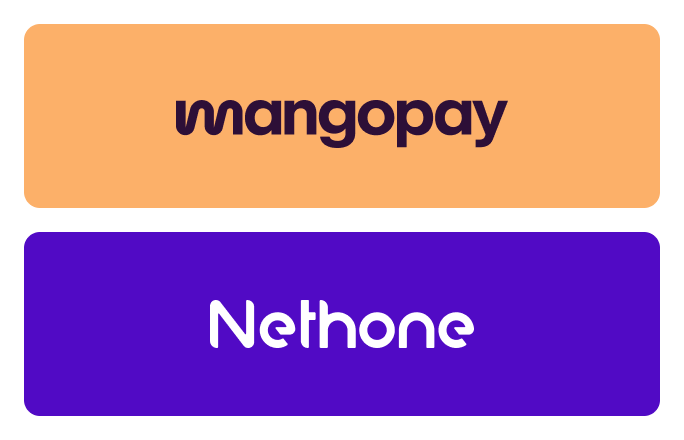C2C marketplaces: How to make second-hand first choice
C2C online marketplaces, where individuals sell to other individuals, are the hallmark of the booming circular economy. Bolstered by the global pandemic, growing concerns about sustainability, or simply out of financial necessity, consumers are turning to resale and making collaborative marketplaces a mainstream market.
The first major second-hand marketplace was eBay, where individuals could auction off objects in exchange for a listing fee. Since then, second hand marketplaces have come a long way. According to a study carried out by Mckinsey, fashion and family items top C2C transactions for second-hand goods in the UK, France, and Germany. They estimate that in 2021, the category was worth 6 billion euros, double what it represented in 2020.
There are many ways of looking at second-hand C2C marketplaces depending on their business model, their vertical, or even their UX. And the possibilities for niche marketplaces are almost endless.
So what sets C2C platforms apart from other marketplaces? And how are operators making them people’s number one choice?
Main differences between C2C and other types of marketplaces?
Because C2C involves non-professionals on both ends of the journey, if there’s one platform type where building a community is essential, it’s definitely C2C. And it’s hardly surprising that many already established e-commerce platforms are launching dedicated C2C verticals to cater to an already captive audience. But that isn’t to say that, without some savvy, startups can’t make it big. We’ve witnessed exponential growth among C2C pure players in recent years, with incredible success stories like Vinted and Wallapop, inspiring new entrepreneurs to launch their platforms.
What a difference a letter makes, and with it come challenges that platforms can easily overcome if tackled properly.
The ins and outs of inventory
Contrary to B2C where businesses usually offer a whole inventory of products, on C2C second-hand marketplaces, individuals in all likelihood may just have, at most, a few products of varying quality to offload, meaning that building up a strong C2C marketplace catalog requires getting a lot of sellers on board, and just as many buyers.
Bargains vs profitability?
With one of the main attractions of a C2C marketplace being the ability to find a good deal, items will be sold at prices that are often lower than retail value (with a few exceptions, like luxury goods or collectibles, for example). This means margins for platform operators tend to be proportionally slim.
On the other hand, the absence of intermediaries involved, and the direct connection of sellers with a broader customer base can also equate to increased profitability. One of the main challenges for those operating C2C marketplaces is finding the right pricing model to attract and retain buyers and sellers.
Trust issues
Another challenge is reliability: non-professional sellers are not held to the same standard as professional merchants, which means platforms have to find ways of managing fake and unscrupulous sellers or simply lack expertise. 87% of online shoppers worry about the authenticity of the products available on second hand marketplaces.To reassure consumers, guarantee conversions and boost loyalty, products sold should actually be what they say they are and come with the right price tag attached.
Payments
Nothing puts off buyers more than not being able to finalize a transaction, either because they can’t find their preferred payment method or currency, the payment page doesn’t seem secure or instructions are unclear. While buyers and sellers on C2C platforms are non professionals, the marketplace in itself is a trusted third-party. Payments therefore should feel intuitive and safe to avoid cart abandonment. And of course transactions have to flow both seamlessly to reassure sellers.
Out of the box thinking and technology are constantly reinventing how platforms can use their payment flows to create a sense of community. Here are the main points they should bear in mind in order to …
Get it right the first time
Figure out how to best monetize the model
The OG of C2C marketplaces, eBay opted for a model that charges sellers a listing fee. Others rely on third party advertising… However as always with the marketplace model, sky’s the limit and it’s all about thinking outside the box but also understanding your customer. Vinted and Wallapop have reinvented the rules by charging a commission on the sale. This lowers the barrier to entry, encouraging sellers to join a platform.
Make the sign up process easy
We’ve said it once and we’ll say it again. Onboarding is crucial in any marketplace and especially in second-hand. Platforms that thrive have a plentiful and constantly refreshed offering that keeps customers coming back for more. Making the onboarding experience engaging and easy is important. Of course, as a third-party platform, marketplaces have to ensure due diligence is done to remain compliant with regulatory authorities. Delegating the process to a trusted provider allows marketplaces to tick all the right boxes, all while automating the process to scale up operations rapidly.
Close the loop
On C2C marketplaces, sellers can become buyers and vice versa: it’s all a matter of effectively implementing the virtuous cycle of closed loop payments. Closed loop payments are achieved by maintaining funds on a platform for future use rather than transferring them by default to a seller’s account. This can be achieved through the creation of dedicated wallets that keep funds secure and readily available, therefore maximizing the opportunity for repeat conversions and increasing chances that sellers will in turn become buyers later down the line.
Protect users
To protect their communities and the platform’s reputation, many platforms, like Chrono24 and Vinted, offer buyer protection and refund guarantees. This assurance builds trust that, in turn, boosts conversions. It also reduces friction related to potential disputes that may arise with safeguards capable of rapidly de-escalating contentious situations.
Prevent scams
Buyers expect the same level of protection, security and overall user experience as on a non C2C marketplace. Unfortunately, fraud affects almost all platforms at varying degrees. Malevolent activities can come in a broad range of forms and are increasingly sophisticated. Machine-learning-operated AI fraud detection tools, like Nethone’s are the most effective at creating custom rules and automatically spotting patterns and discrepancies at every step of the user journey to reduce risks, keep fraudsters at bay, and ultimately protect the platform’s activity and customers.
Think international
There is something incredibly appealing about the elasticity of the marketplace model. From hyper localized to global, if scaled properly a platform can either replicate its model in several markets, or allow buyers and sellers to transact internationally. Cross border transactions are a huge stake for platforms. They grew from 29 trillion dollars in 2019 to around 39 trillion by 2022.
Build your ecosystem
From spotlight features and pricing tools that help neophytes become sales experts to AI boosted authentication tools that can make sure high-end products are the real deal, there are many ways a second-hand C2C platform can stand out. Many are also now offering fulfillment to their services, providing buyers with the same level of service they experience on traditional e-commerce platforms.
Businesses need solutions that guarantee instant, secure and transparent payments. APIs that can be seamlessly integrated into a company’s infrastructure allow platforms to not only meet all their payment and regulatory requirements, but also facilitate the creation of rich and exciting experiences that help second-hand platforms, and their communities, thrive.



